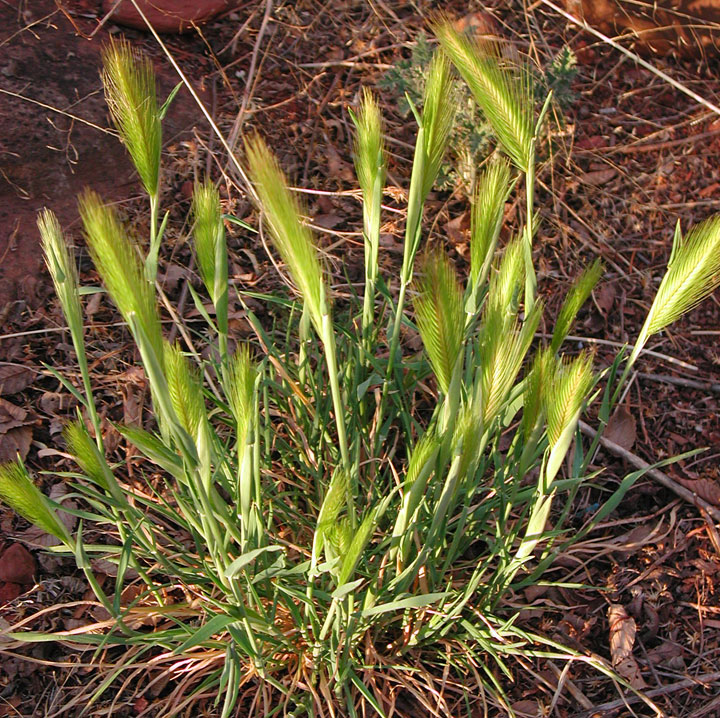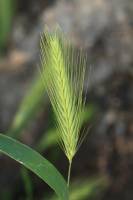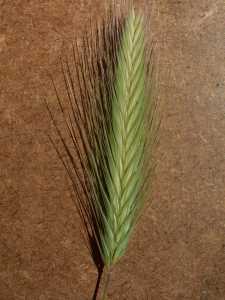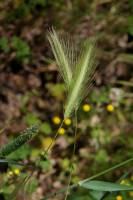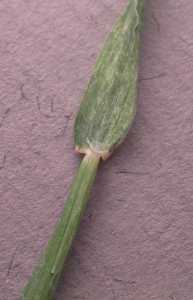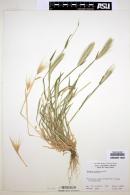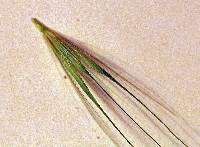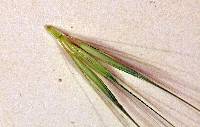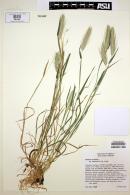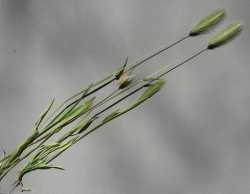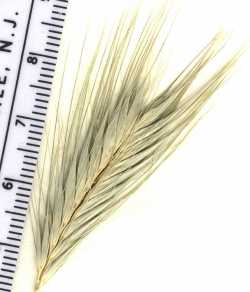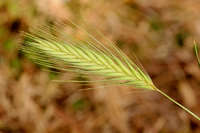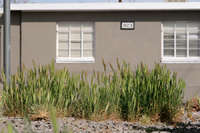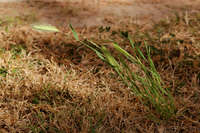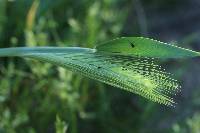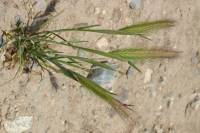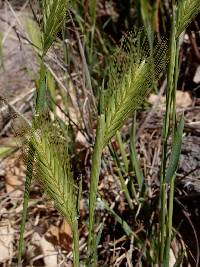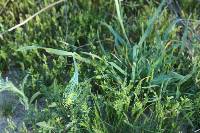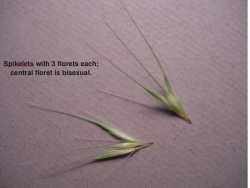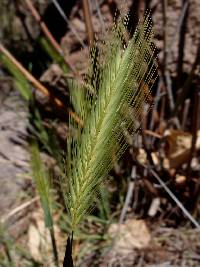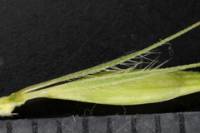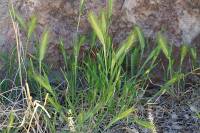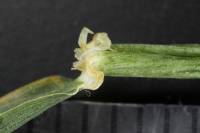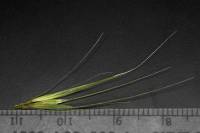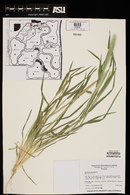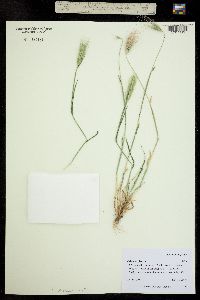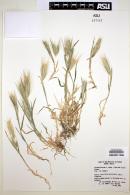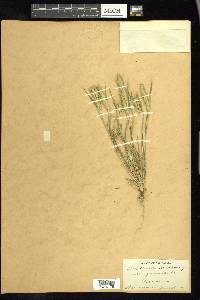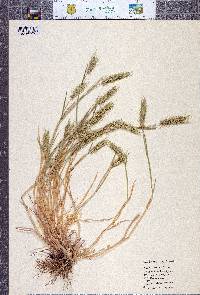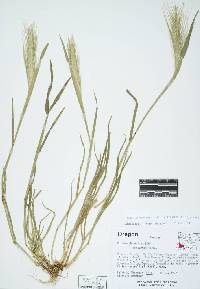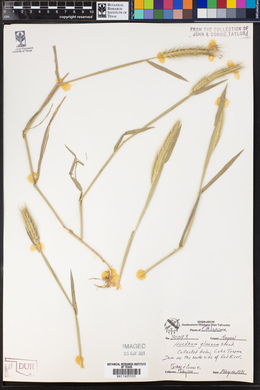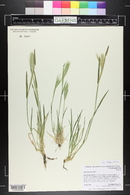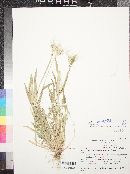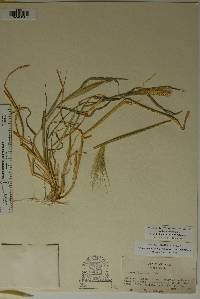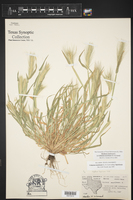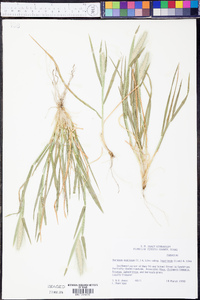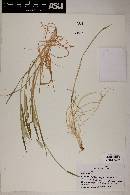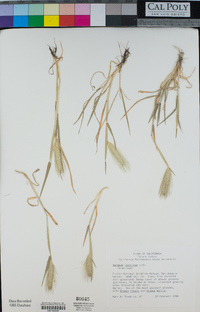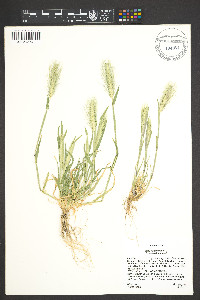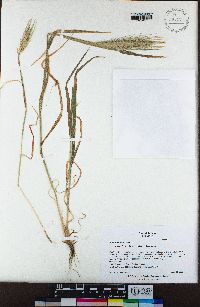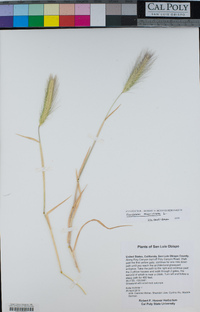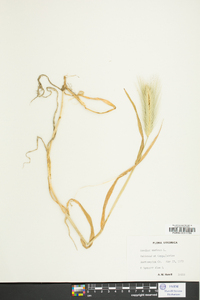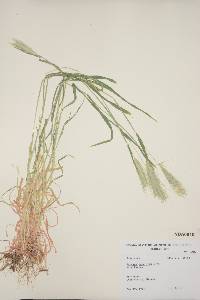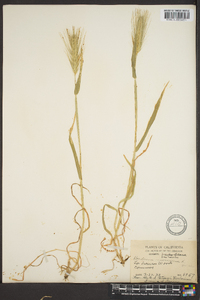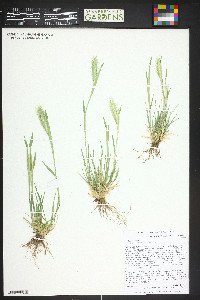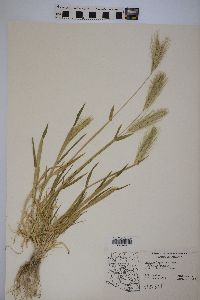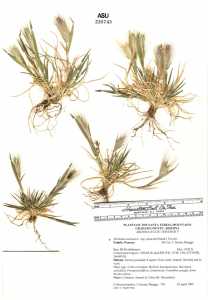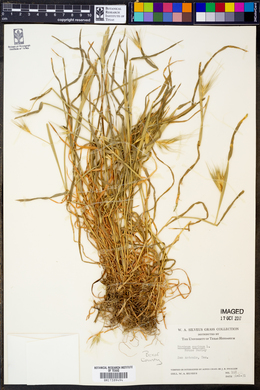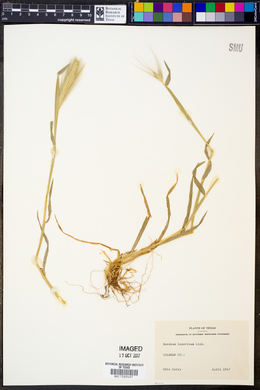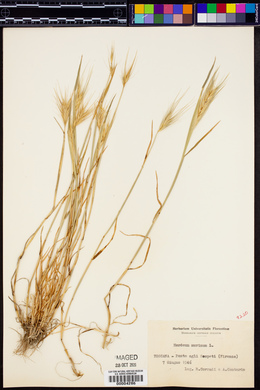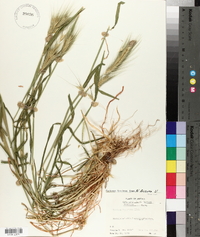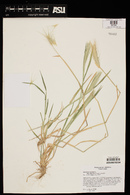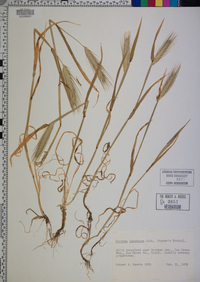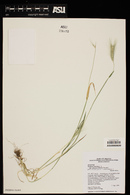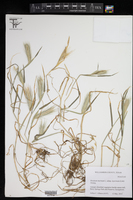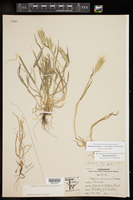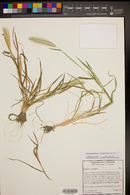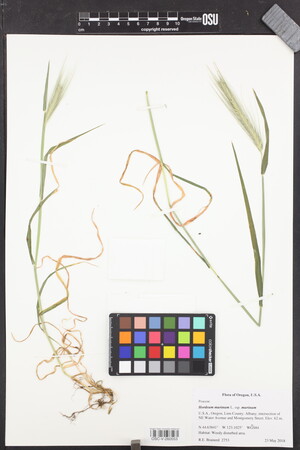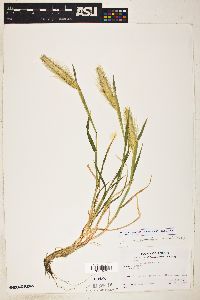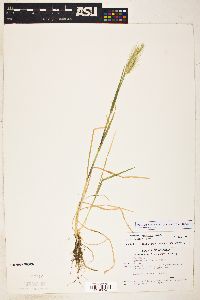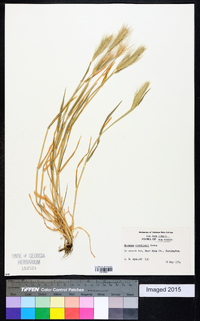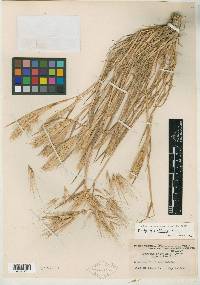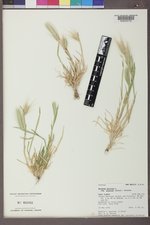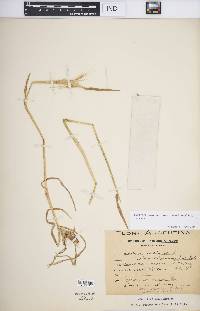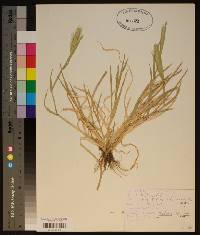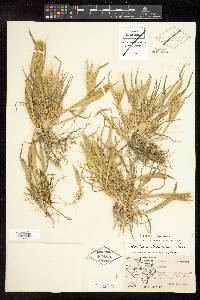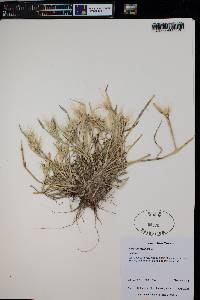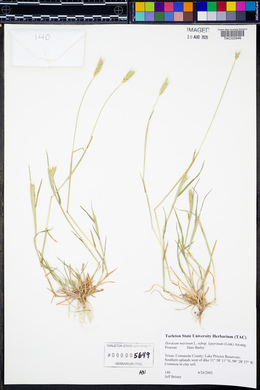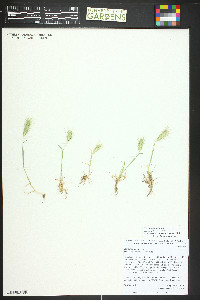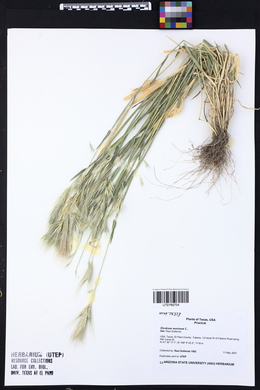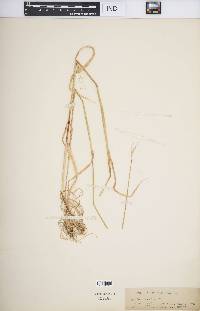
|
|
|
|
Family: Poaceae
Wall Barley, more...mouse barley, bulbous barley
|
Plants annual; loosely tufted. Culms to 110 cm, usually erect, sometimes almost prostrate; nodes glabrous. Lower sheaths often completely surrounding the culms, glabrous or somewhat pilose; ligules 1-4 mm; auricles to 8 mm, well developed even on the upper leaves; blades to 28 cm, usually flat, occasionally with involute margins, glabrous or sparsely pilose, sometimes scabrous. Spikes 3-8 cm long, 7-16 mm wide, pale green to distinctly reddish, especially the awns; rachises disarticulating at maturity. Central spikelets sessile, florets sessile or pedicellate, pedicels to 2 mm; glumes 11-25 mm long, 0.8-1.8 mm wide, flattened, margins usually distinctly ciliate; lemmas 8-14 mm long, to 2 mm wide, more or less smooth, awned, awns 20-40 mm; lodicules glabrous or with 1+ cilia; anthers 0.2-3.2 mm, gray to yellow, sometimes with purple spots. Lateral spikelets staminate, floret sessile; glumes flattened, margins ciliate; lemmas 8-15 mm, awned, awns 20-50 mm; paleas 8-15 mm; rachillas 2.5-6.5 mm, slender or gibbous, yellow. 2n = 14, 28, 42. Hordeum murinum is native to Eurasia, where it is a common weed in areas of human disturbance. It is thought to have originated around seasides, sandy riverbanks, and animal watering holes. It is now an established weed in the southwestern Flora region and other scattered locations. The records in Alaska are from the Anchorage area. Prostrate plants are associated with grazing. Three subspecies are recognized. Dr. David Bogler, USDA NRCS PLANTS Database Annuals, Terrestrial, not aquatic, Stems nodes swollen or brittle, Stems erect or ascending, Stems caespitose, tufted, or clustered, Stems terete, round in cross section, or polygonal, Stem internodes hollow, Stems with inflorescence less than 1 m tall, Stems, culms, or scapes exceeding basal leaves, Leaves mostly cauline, Leaves conspicuously 2-ranked, distichous, Leaves sheathing at base, Leaf sheath mostly open, or loose, Lea f sheath smooth, glabrous, Leaf sheath hairy, hispid or prickly, Leaf sheath and blade differentiated, Leaf blades linear, Leaf blade auriculate, Leaf blades 2-10 mm wide, Leaf blades mostly flat, Leaf blades mostly glabrous, Leaf blades more or less hairy, Leaf blades glaucous, blue-green, or grey, or with white glands, Ligule present, Ligule an unfringed eciliate membrane, Inflorescence terminal, Inflorescence solitary, with 1 spike, fascicle, glomerule, head, or cluster per stem or culm, Inflorescence single raceme, fascicle or spike, Inflorescence spikelets arranged in a terminal bilateral spike, Flowers bisexual, Spikelets sessile or subsessile, Spikelets dorsally compressed or terete, Inflorescence or spikelets partially hidden in leaf sheaths, subtended by spatheole, Spikelet less than 3 mm wide, Spikelets with 1 fertile floret, Spikelets 3 per node, Spikelets distichously arranged, Spikelets bisexual, Inflorescence disarticulating between nodes or joints of rachis, rachis fragmenting, Spikelets disarticulating below the glumes, Spikelets falling with parts of disarticulating rachis or pedicel, Spikelets closely appressed or embedded in concave portions of axis, Rachilla or pedicel glabrous, Glumes present, empty bracts, Glumes 2 clearly present, Glumes equal or subequal, Glumes equal to or longer than adjacent lemma, Glumes awn-like, elongated or subulate, Glumes awned, awn 1-5 mm or longer, Glume surface hairy, villous or pilose, Glumes 1 nerved, Glumes 3 nerved, Glume margins or apex erose-ciliate, Lemma coriaceous, firmer or thicker in texture than the glumes, Lemma 5-7 nerved, Lemma glabrous, Lemma apex acute or acuminate, Lemma mucronate, very shortly beaked or awned, less than 1-2 mm, Lemma distinctly awned, more than 2-3 mm, Lemma with 1 awn, Lemma awn 1-2 cm long, Lemma awn 2-4 cm long or longer, Lemma awned from tip, Lemma awn from sinus of bifid apex, Lemma awns straight or curved to base, Lemma margins thin, lying flat, Lemm a straight, Palea present, well developed, Palea membranous, hyaline, Palea about equal t Much like no. 6 [Hordeum leporinum Link]; floret of the central spikelet sessile or subsessile, the rachilla-joint not nearly as long as the pedicels of the lateral spikelets; lemmas of the lateral spikelets larger, 10-18 mm; 2n=14, 28, 42. Roadsides, ditch-banks, and waste places; native of Europe, intr. and well established in w. U.S., sporadic with us. Gleason, Henry A. & Cronquist, Arthur J. 1991. Manual of vascular plants of northeastern United States and adjacent Canada. lxxv + 910 pp. ©The New York Botanical Garden. All rights reserved. Used by permission. |
|
|
|

